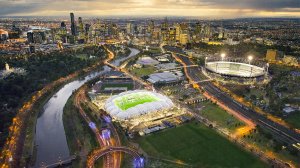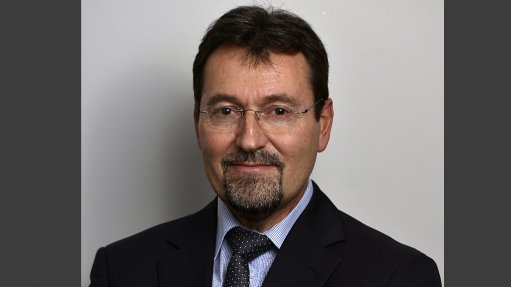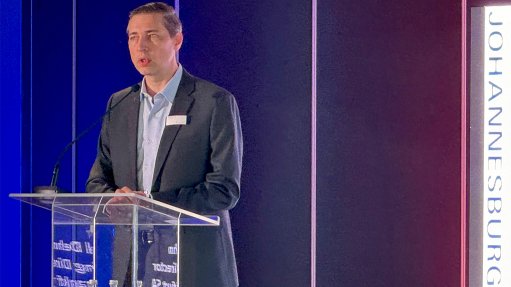Personalised Experiences, Neighbourhood ‘Live Sites’ And Temporary Venues Help Create More Inclusive, Cost-Effective Olympic Games Predicts Arup
This article has been supplied as a media statement and is not written by Creamer Media. It may be available only for a limited time on this website.
Design, engineering and consulting firm Arup, has been involved in some of the best-known sporting destinations from the Singapore Sports Hub, through to the Bird’s Nest Stadium and Water Cube in Beijing and many of the venues and long-terms plans for London 2012 and the Queen Elizabeth Olympic Park. Here in South Africa, Arup contributed to the country’s readiness for the 2010 FIFA Soccer World Cup.
We were appointed to undertake master planning, design, project management and construction monitoring work for the upgrading of four stadia in the Gauteng region; various environmental services for the Polokwane Municipality; and led the planning, development and implementation of the Transportation Operational Plan for the eThekwini Transport Authority. Arup’s Cities Alive: Rethinking Legacy for Host Cities report gathers fresh thinking from around the world to outline tactics that will help cities increase community engagement and maximise investment in major events.
Closer to the action through virtual reality and live sites
The London 2012 Live Sites generated real excitement and enabled more people to get into the spirit of the Games. Advances in hand-held technology, virtual reality and streaming media will enable spectators to tune into any number of live sports, get guided tours of venues or experience being at the virtual trackside with their favourite athletes. Formula-e Motor Racing is a great example, with the use of 360-degree cameras, live streaming of races, almost instant highlights and even the opportunity for fans to ‘vote’ to give their favourite drivers an additional boost of power.
Flexible, temporary venues
Arup predicts that most major event venues will be temporary in the future, allowing land to be swiftly released for redevelopment post event. More affordable – off-the-shelf or pre-engineered sporting venues will significantly reduce cost. The report also highlights that reduced venue capacities can bring significant savings, with smaller facilities resulting in fuller capacities and a better atmosphere for fans.
New financial models
Cities are cautious about bidding for major sporting events, with Boston, Hamburg, Rome and Budapest pulling out of the running for the Olympics and Los Angeles seeking an advance from the International Olympic Committee. New ‘value’ focussed financial models are emerging, which should be encouraged. Investment in regeneration can drive huge increases in surrounding land values. This model would see a percentage of this increased land value returned and put towards the cost of infrastructure.
Headlines focus on the overall cost of major events but, planned well, much of the investment can be in transformational city infrastructure and regeneration, which may well have been needed anyway. This cost could be taken off the balance sheet, revealing a ‘true cost of hosting’ which focuses specifically on the venues, security, marketing and other direct costs.
The socio-economic value of community engagement, neighbourhood investment and increased mobility is rarely incorporated in cost-benefit modelling of event planning. Yet the boost to the economy derived from increased social mobility and long-term employment can significantly outweigh many upfront costs if event planning is led by such outcomes.
Streamlined transport
The greatest single risk to the successful legacy of a major event is the potential disruption it can bring to the daily life of a host city. A combination of new technologies, greater use of data and more effective management will reduce cost, improve experiences for residents and visitors and strengthen the long-term resilience of host cities. Examples include the idea of ‘logistics hubs’ outside city centres, where deliveries can be consolidated so that they minimise the number of trips required, reduce emissions and congestion and load packages onto smaller, electric vehicles. London 2012 also saw the adoption of a highly efficient multimodal ‘transport coordination centre’, as well as greater use of travel planning apps. Arup expects most host cities to explore ways of using predictive modelling tools, data analysis, mobile apps and live updates to deliver smooth running transport and logistics.
Creating a resilient legacy
The report urges cities to see the major events as a catalyst to help them tackle the major challenges they are facing – such as rising air pollution; energy shortage and an increasing number of extreme weather events. Rather than focusing on event related sustainability outcomes, such as reducing energy use during sporting events – the report recommends that it is used as an opportunity to scale up and accelerate ambitions of having a long-term impact. For example, this could involve helping cities establish their own localised energy, cooling and water systems.
Jerome Frost, Global Planning and Cities leader at Arup and former head of design and regeneration at the London 2012 Olympic Delivery Authority says, “Using technology to personalise and increase access to events; developing smaller, temporary venues and placing value-based, socio-economic and city resilience outcomes at the centre of event planning are crucial. Cities need to look at these measures to reduce cost; maximise the transformational impact of hosting major events and gain the support of the public.
“Legacy has been viewed too narrowly, with the emphasis on the physical structures left behind. We need to think about how we build institutional muscle power – able to deliver benefits before, during and after the event. All too often planners focus on event only infrastructure, exclusive ticketed participation and short-term delivery capacity, with cities reverting to their normal operations and frustrations immediately post event. Cities need to see the event as a ‘partner’ in helping them deliver solutions to meet the growing longer-term challenges they are facing. They should be a focal point for citizen engagement and galvanising investment momentum.”
Comments
Press Office
Announcements
What's On
Subscribe to improve your user experience...
Option 1 (equivalent of R125 a month):
Receive a weekly copy of Creamer Media's Engineering News & Mining Weekly magazine
(print copy for those in South Africa and e-magazine for those outside of South Africa)
Receive daily email newsletters
Access to full search results
Access archive of magazine back copies
Access to Projects in Progress
Access to ONE Research Report of your choice in PDF format
Option 2 (equivalent of R375 a month):
All benefits from Option 1
PLUS
Access to Creamer Media's Research Channel Africa for ALL Research Reports, in PDF format, on various industrial and mining sectors
including Electricity; Water; Energy Transition; Hydrogen; Roads, Rail and Ports; Coal; Gold; Platinum; Battery Metals; etc.
Already a subscriber?
Forgotten your password?
Receive weekly copy of Creamer Media's Engineering News & Mining Weekly magazine (print copy for those in South Africa and e-magazine for those outside of South Africa)
➕
Recieve daily email newsletters
➕
Access to full search results
➕
Access archive of magazine back copies
➕
Access to Projects in Progress
➕
Access to ONE Research Report of your choice in PDF format
RESEARCH CHANNEL AFRICA
R4500 (equivalent of R375 a month)
SUBSCRIBEAll benefits from Option 1
➕
Access to Creamer Media's Research Channel Africa for ALL Research Reports on various industrial and mining sectors, in PDF format, including on:
Electricity
➕
Water
➕
Energy Transition
➕
Hydrogen
➕
Roads, Rail and Ports
➕
Coal
➕
Gold
➕
Platinum
➕
Battery Metals
➕
etc.
Receive all benefits from Option 1 or Option 2 delivered to numerous people at your company
➕
Multiple User names and Passwords for simultaneous log-ins
➕
Intranet integration access to all in your organisation





















